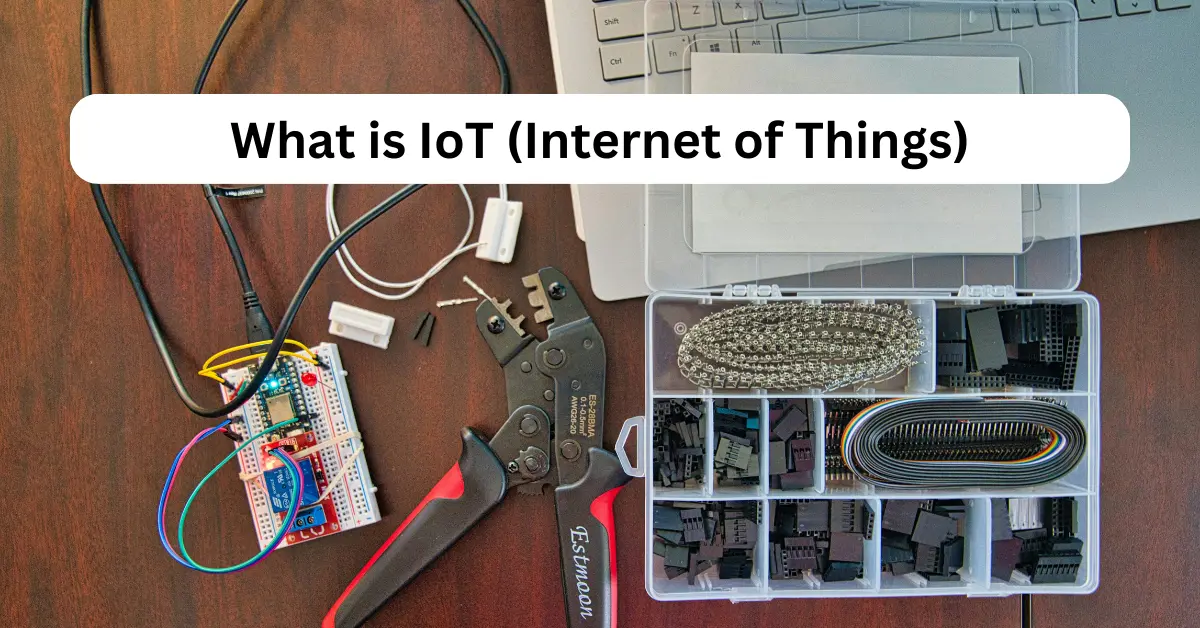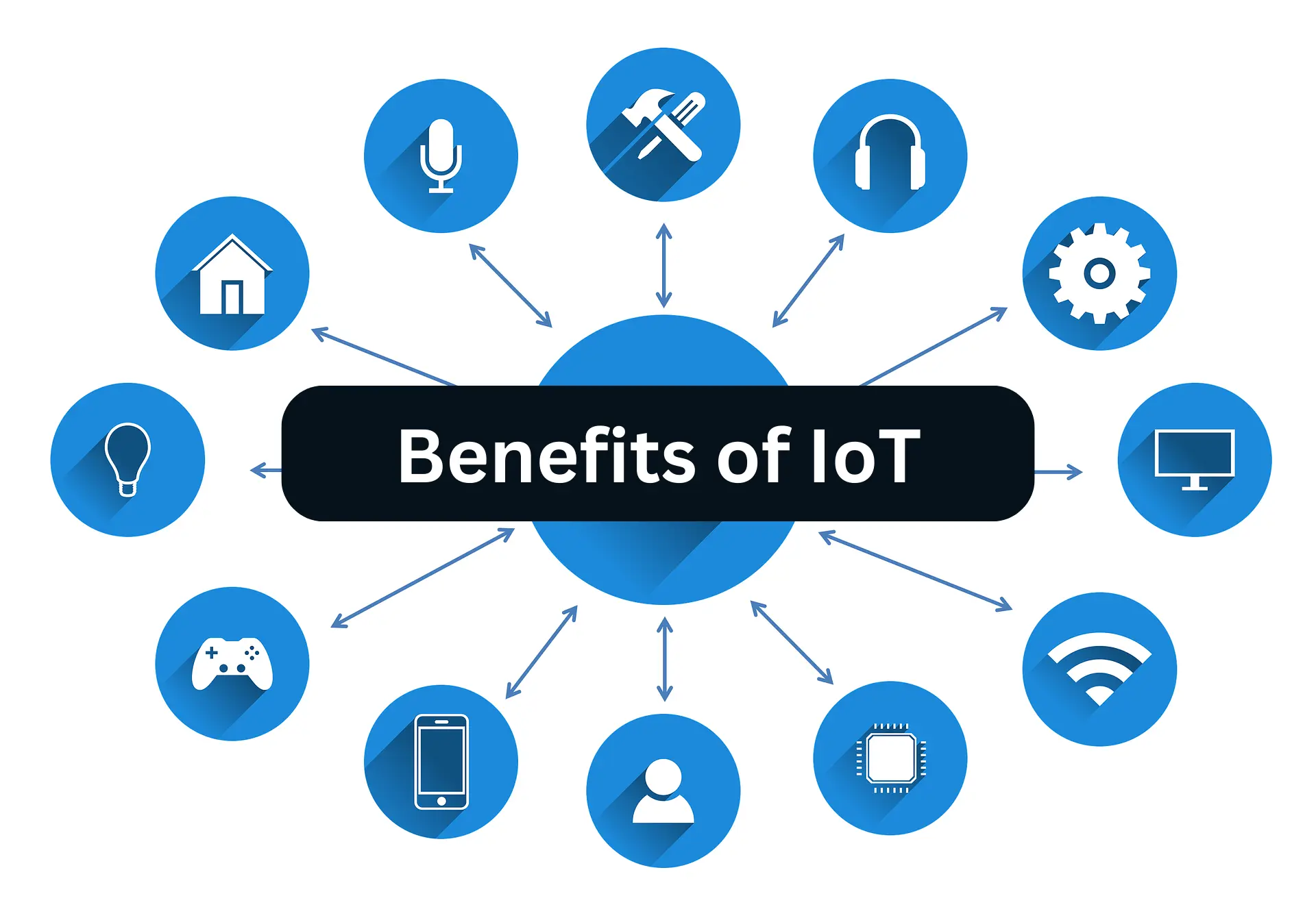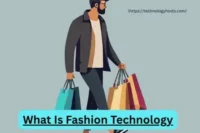What is IoT (Internet of Things)? Complete Beginner’s Guide
Published: 12 Dec 2024
The Internet of Things (IoT) is revolutionizing how we interact with the world around us. From smart thermostats in our homes to advanced medical devices in hospitals, What is IoT (Internet of Things)
IoT connects everyday objects to the internet, making life more convenient, efficient, and connected. In this article, we’ll explore what IoT is, how it works, its benefits, challenges, and practical applications. Whether you’re a tech enthusiast or a beginner, this guide has you covered!

What is IoT?
IoT, or the Internet of Things, refers to a network of physical devices embedded with sensors, software, and connectivity, enabling them to collect and exchange data over the internet. These devices range from smartwatches and home assistants like Alexa to industrial machinery and connected cars.
Simple Definition: IoT connects devices to the internet, allowing them to “talk” to each other and perform tasks without human intervention. For example:
A smart thermostat adjusts your home’s temperature based on your preferences and schedule.
A fitness tracker monitors your steps, heart rate, and sleep, syncing the data to your smartphone.
.what is information technology
How Does IoT Work?
IoT relies on four main components to function effectively:
Sensors and Devices
Devices like temperature sensors, GPS trackers, or cameras collect data from their surroundings.
Example: A smart refrigerator detects when food items are running low.
Connectivity
IoT devices connect to the internet using Wi-Fi, Bluetooth, or cellular networks to transmit data.
Example: Your smartwatch syncs with your phone via Bluetooth.
Data Processing
The collected data is analyzed either locally (edge computing) or in the cloud.
Example: Your smart assistant processes your voice commands to play music.
How should businesses approach IoT?
Businesses should approach IoT strategically by starting with clear goals. Identify specific challenges IoT can address, such as improving efficiency, enhancing customer experiences, or reducing costs. Begin with a small pilot project to test feasibility and scalability before full implementation.
Investing in secure infrastructure is critical—use trusted devices, encrypt data, and ensure regular updates to protect against security breaches. Focusing on interoperability is also key; select IoT solutions that integrate seamlessly with existing systems like ERP or CRM software.
Leveraging IoT for data analytics can provide actionable insights, helping businesses optimize operations, from inventory management to logistics. Collaborating with IoT experts or vendors ensures smooth implementation and troubleshooting.
Additionally, compliance with data privacy regulations like GDPR is essential to safeguard customer trust. With a structured approach, IoT can drive innovation, improve productivity, and provide a competitive edge in today’s tech-driven landscape.
What is IoT (Internet of Things)
Actionable Output
- Based on the processed data, the device performs an action.
- Example: A smart irrigation system waters plants when soil moisture is low.
- Key Characteristics of IoT
- IoT stands out because of its unique features:
Interconnectivity: Devices communicate seamlessly within a network.
Automation: Reduces human intervention by automating tasks.
Real-Time Processing: Analyzes data and responds instantly.
Scalability: Supports networks ranging from a few devices to billions globally.
Data-Driven Insights: Provides actionable data for better decision-making.
Benefits of IoT

IoT offers several advantages, making it indispensable in various domains:
Convenience
IoT simplifies everyday tasks, like turning off lights remotely or scheduling appliances to run at specific times.
Efficiency
Automated processes save time and resources, boosting productivity in industries and homes.
Cost Savings
IoT reduces operational costs by optimizing resource usage, such as energy-efficient smart thermostats.
Improved Safety
IoT-enabled devices, like security cameras and alarms, enhance safety in homes and workplaces.
Better Health Monitoring
Wearable IoT devices track vital signs, helping individuals and healthcare providers monitor health in real-time.
Examples of IoT in Action
The Internet of Things (IoT) is transforming industries and everyday life by connecting devices, enabling automation, and offering real-time insights. Below are detailed examples of how IoT is used across various sectors:
What is IoT (Internet of Things)
Smart Homes
IoT has revolutionized home living by creating smart environments where devices are interconnected and responsive to users’ needs.
Key Applications:
Smart Thermostats: Devices like Nest and Ecobee adjust your home’s temperature based on your preferences, weather conditions, or when you’re home or away, helping save energy and costs.
Smart Assistants: Voice-activated devices like Amazon Alexa or Google Assistant control smart devices, answer questions, and even manage shopping lists.
Smart Lights: Philips Hue and similar smart lighting systems allow users to schedule lighting, change colors, and control brightness using apps or voice commands.
Smart Security Systems: IoT-enabled doorbells (Ring), cameras (Arlo), and alarms provide real-time surveillance, alerts, and remote monitoring for enhanced security.
Benefits:
Convenience: Automate mundane tasks like turning off lights or adjusting the thermostat.
Energy Efficiency: Reduce waste with devices that optimize energy usage.
Enhanced Security: Monitor your home remotely and receive instant alerts in case of intrusions.
Healthcare
IoT has significantly improved healthcare through connected devices that monitor patients, provide insights, and enable remote care.
Key Applications:
Wearable Health Devices:
Fitness trackers like Fitbit and Apple Watch monitor vital signs such as heart rate, blood pressure, and sleep patterns, helping users stay on top of their health goals.
Smart Medical Equipment: IoT-enabled devices like glucose monitors, ECG monitors, and smart inhalers send real-time data to healthcare providers for better patient care.Telemedicine Platforms:
IoT facilitates remote consultations through devices that measure and share patient metrics during virtual doctor visits.
Hospital Asset Management:
IoT is used to track hospital equipment, ensuring resources like ventilators and wheelchairs are always available when needed.
Benefits:
Proactive Healthcare: Enables early detection of health issues through constant monitoring.
Accessibility: Patients in remote areas can access quality healthcare through telemedicine.
Cost Savings: Reduces the need for frequent hospital visits.
Risks and Challenges in IoT (Short Version)
Security: IoT devices are prone to hacking due to weak security.
Privacy: Collection of personal data raises privacy concerns.
Compatibility: Different devices may face integration issues.
Costs: High setup and maintenance costs.
Scalability: Managing large networks becomes complex.
Regulations: Compliance with data laws can be challenging.
Reliability: Dependence on stable internet for operations
What does IoT stand for?
| Quiz: Test Your IoT Knowledge |
|---|
|
A) Internet of Technology A) Smart Thermostat A) Reduced costs |
IoT is used for automating tasks, enhancing convenience, and improving efficiency. Common applications include smart home devices (e.g., Alexa), fitness trackers, connected cars, and smart security systems.
IoT can be secure if proper measures are taken, such as using trusted devices, enabling encryption, and updating firmware regularly. However, users should remain vigilant about data privacy and cyber risks.
What is IoT (Internet of Things)
Proudly powered by WordPress






